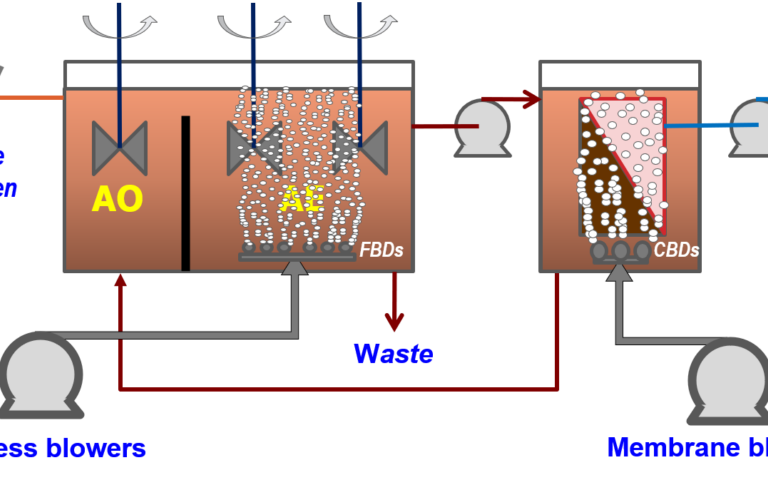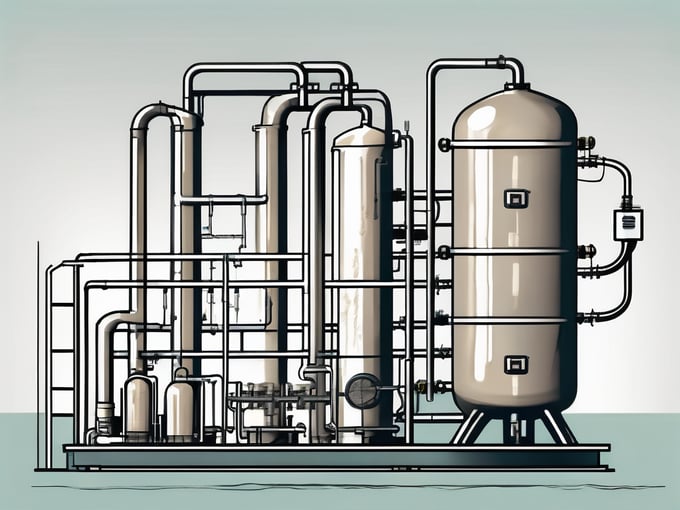Troubleshooting Common Issues with Membrane Bioreactor Systems
Troubleshooting Common Issues with Membrane Bioreactor Systems
Blog Article
Comprehending Membrane Bioreactors: The Future of Wastewater Therapy
Membrane layer bioreactors (MBRs) stand for a noteworthy innovation in the field of wastewater treatment, integrating organic processes with innovative membrane filtration to enhance effluent quality. As international water scarcity and rigid regulatory frameworks become increasingly pressing issues, MBR modern technology uses a reliable response through its capacity to lessen footprint and optimize source recuperation. The adoption of MBRs is not without its difficulties, which merit careful consideration. What are the key aspects affecting their application and lasting feasibility in various contexts? The answers might improve our approach to wastewater administration.
What Are Membrane Layer Bioreactors?

The core parts of MBR systems consist of a bioreactor where microbial task takes place and a membrane unit that filters the combined liquor. This double functionality enables the synchronised destruction of natural issue and solid-liquid splitting up in a single step. MBRs can run in both submerged and outside arrangements, with immersed systems being more common because of their compact layout and functional efficiency.
The fostering of MBR innovation has actually acquired grip in numerous applications, ranging from municipal wastewater therapy to industrial effluent monitoring. MBRs are particularly helpful in situations where space is minimal or strict effluent high quality criteria must be fulfilled. By keeping a high focus of microbes within the bioreactor, MBRs enhance the degradation of natural contaminants, thereby producing greater therapy efficiencies contrasted to traditional approaches.
Key Benefits of MBR Technology
The combination of organic treatment with membrane filtering in MBR systems offers many benefits that establish it apart from conventional wastewater treatment approaches. Among the key benefits is the boosted effluent quality. MBRs properly get rid of suspended virus and solids, attaining greater levels of filtration that meet rigorous discharge requirements and promote water reuse applications.

Another significant advantage is the decreased sludge manufacturing. MBR systems produce less excess sludge, resulting in lower disposal expenses and a decrease in ecological impact. The closed nature of the membrane system decreases the risk of odor emissions and boosts total process control.
Finally, MBRs are flexible and adaptable, making them suitable for different wastewater kinds, including industrial and metropolitan resources. The ability to integrate with innovative treatment innovations additionally improves their effectiveness, making MBRs an appealing service for the future of wastewater administration.
Difficulties and Limitations of MBRs
While MBR technology offers many benefits, it additionally encounters numerous difficulties and restrictions that can impact its widespread adoption. One significant obstacle is the high funding and functional costs connected with MBR systems. The first investment for membrane materials and the necessary infrastructure can be significant, making it much less obtainable for smaller markets or municipalities.
Additionally, membrane layer fouling stays an essential problem that can reduce system efficiency and boost maintenance needs. Fouling happens when solids, organic matter, or bacteria gather on the membrane surface area, bring about minimized permeability and calling for frequent cleansing or replacement.
One more constraint involves the complexity of the modern technology. MBR systems require competent personnel for procedure and maintenance, which can be a barrier in areas with minimal technological know-how. Moreover, the disposal of spent membrane layers provides ecological concerns, as the materials are commonly not eco-friendly and can add to waste monitoring challenges.
Lastly, more helpful hints while MBRs can successfully deal with a vast array of wastewater, they might not be appropriate for all applications, specifically those with high focus of fats, oils, and oils, necessitating further research and advancement to deal with these limitations.
Applications of Membrane Layer Bioreactors
In various markets, membrane layer bioreactors (MBRs) have arised as a functional service for wastewater therapy (Membrane Bioreactor). Their applications extend municipal, industrial, and agricultural setups, showcasing their adaptability and performance in varied atmospheres. In community wastewater treatment plants, MBRs considerably improve effluent top quality, permitting water reuse and lowering the environmental effect of discharged wastewater
Industrially, MBRs are utilized in food and beverage handling, fabric production, and pharmaceutical manufacturing, where they successfully deal with high-strength waste streams. Their ability to handle rising and fall loads and differing contaminant focus makes them particularly beneficial in these industries. Additionally, MBRs promote the elimination of pathogens, put on hold solids, and natural matter, adding to compliance with stringent discharge policies.
In farming, MBRs are significantly made use of for dealing with agricultural runoff and livestock wastewater, allowing the healing of nutrients for fertilizer production. They additionally help in the treatment of greywater for irrigation, promoting sustainable water monitoring practices.
The versatility of MBRs is further evidenced by their combination with other innovations, such as anaerobic food digestion and progressed oxidation procedures, boosting general efficiency and resource recovery in wastewater treatment systems.
The Future of Wastewater Therapy
Improvements in innovation and an expanding focus on sustainability are forming the future of wastewater therapy. Membrane layer bioreactors (MBRs) exhibit this shift by integrating biological therapy processes with membrane filtration, leading to top quality effluent suitable for reuse. The trend in the direction of round economies is triggering centers to adopt MBRs for their capacity to recuperate sources, such as water and nutrients, from wastewater.
Innovations in membrane layer materials and arrangement are improving the efficiency and long life of MBR systems, minimizing operational expenses and power consumption. Smart innovation integration, consisting of real-time tracking and automated control systems, is additional enhancing efficiency and allowing predictive maintenance, thus reducing downtime.
Moreover, regulative pressures and social assumptions are pushing districts and industries to take on more lasting methods. Membrane Bioreactor. The change in the direction of decentralized wastewater therapy services is obtaining traction, enabling for localized treatment that reduces transportation prices and power usage
Conclusion
Membrane bioreactors (MBRs) represent a transformative method to wastewater therapy, integrating biological processes with advanced membrane modern technology. The advantages of MBRs, including enhanced effluent top quality, decreased spatial requirements, and lower sludge manufacturing, position them as a feasible solution in the middle of expanding urbanization and more stringent ecological policies. Despite existing challenges, the continued advancement in membrane materials and functional methods assures to go to this site reinforce the effectiveness and fostering of MBRs, guaranteeing their pivotal function in the future of lasting wastewater monitoring.
Membrane bioreactors (MBRs) site here stand for a noteworthy technology in the area of wastewater treatment, integrating biological processes with innovative membrane filtration to improve effluent top quality.Membrane bioreactors (MBRs) incorporate organic treatment processes with membrane filtration to successfully deal with wastewater.The assimilation of biological therapy with membrane filtration in MBR systems supplies various advantages that establish it apart from typical wastewater treatment techniques. Membrane layer bioreactors (MBRs) exemplify this shift by integrating biological treatment procedures with membrane layer filtering, resulting in top notch effluent appropriate for reuse.Membrane layer bioreactors (MBRs) represent a transformative technique to wastewater treatment, incorporating organic processes with sophisticated membrane layer innovation.
Report this page